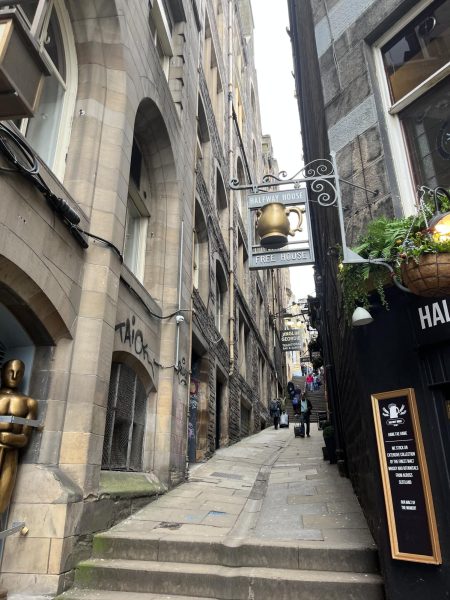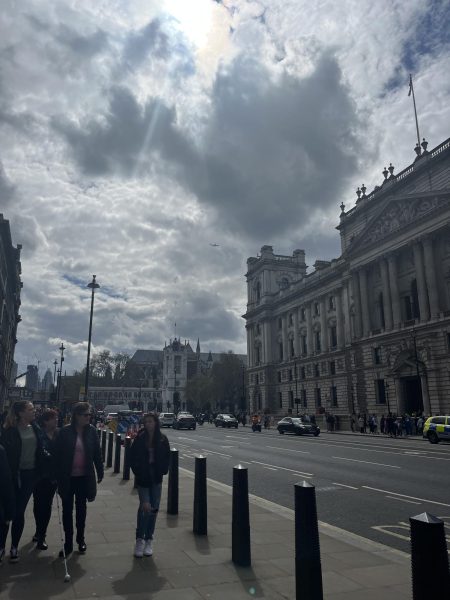On March 15, the Cleveland City Planning Commission unanimously approved two policies that are meant to improve the city’s walkability. By modifying zoning codes and public transportation design standards, the updates are intended to help the city become more friendly to pedestrians and bicyclists, making it more accessible to those who don’t have or prefer not to use cars. The idea is to make Cleveland a “15-minute city,” meaning that a person should be able to reach most of their daily necessities with just a 15-minute walk, bike or public transit ride. From the perspective of a soon-to-be college graduate, this type of change is encouraging to see.
A city’s walkability—or lack thereof—is one of the things I remember hearing previous students troubling over as they made their post-graduation plans. By moving to a less walkable area physical activity would become harder to fit into their schedule and it would be harder to find friends without the casual social interactions of seeing familiar faces on the way to class. I, too, share these concerns, and I believe they highlight the unsung importance of walkable cities for graduates.
One major challenge that new graduates face is the re-establishment of a sense of community once they leave campus. Most universities make an effort to provide students with opportunities to feel as though they belong to the campus community. Take Case Western Reserve University as an example, which refers to housing as “residential communities” and has over 200 student organizations.
But after college, finding those types of communities can be difficult in cities that lack free, accessible and enjoyable public spaces where people can run into others without having to plan it out first. Separated from others by highways and overpasses, a person seeking social interaction has to intentionally arrange meet-ups with others. This makes it difficult to develop the easy, low-stakes friendships which research suggests are an important component of a person’s social network and sense of belonging.
Furthermore, an infrastructure system in which nearly every person is expected to own and use a car to get around is expensive for everyone involved. The federal government spent $52 billion on highways in 2022. According to the Institute for Transportation and Development Policy, the average American spends roughly 16% of their household income on transportation costs, with 93% of that expense being used to purchase a vehicle, its fuel, motor oil and maintenance. In comparison, the average European citizen spends about 11% of their household income on transportation costs. For recent graduates who are just starting their career while simultaneously trying to pay off student debt and save for the future, buying and maintaining a car is an enormous financial burden that could be mitigated by cities being more accessible.
Walkable cities have a long list of other benefits as well. They promote active lifestyles, create less pollution from transportation and have more green spaces. A mixed-use land zoning model allows residential and retail areas to overlap, bringing people physically closer to the resources they need, such as pharmacies and grocery stores. The extra foot traffic can help small businesses engage with more customers. Additionally, well-designed infrastructure helps reduce incidences of car and bike accidents involving pedestrians.
Currently, Cleveland is considered to be fairly pedestrian-friendly, earning a top-20 spot among all U.S. cities in Smart Growth America’s 2023 Foot Traffic Ahead report. In fact, based on the report’s Social Equity Index alone, Cleveland is listed as the best city in the nation. This title reflects the city’s relative affordability and the fact that walkability is not as clearly segregated along racial and socioeconomic lines as in other cities. Even so, this is a relative ranking. Cleveland’s walkable areas are still largely concentrated in Downtown and University Circle, leaving much to be desired in terms of interconnecting the rest of the city. While significant change won’t happen overnight, the existing pedestrian and public transit infrastructure has potential, especially if urban planners continue to focus on developing it further.
At the end of the day, movements in city planning that prioritize pedestrians and quality public transit systems are a step in the right direction. Recent college graduates are one group among many who would benefit greatly from these designs, and it’s exciting to see Cleveland taking measures to implement them.




